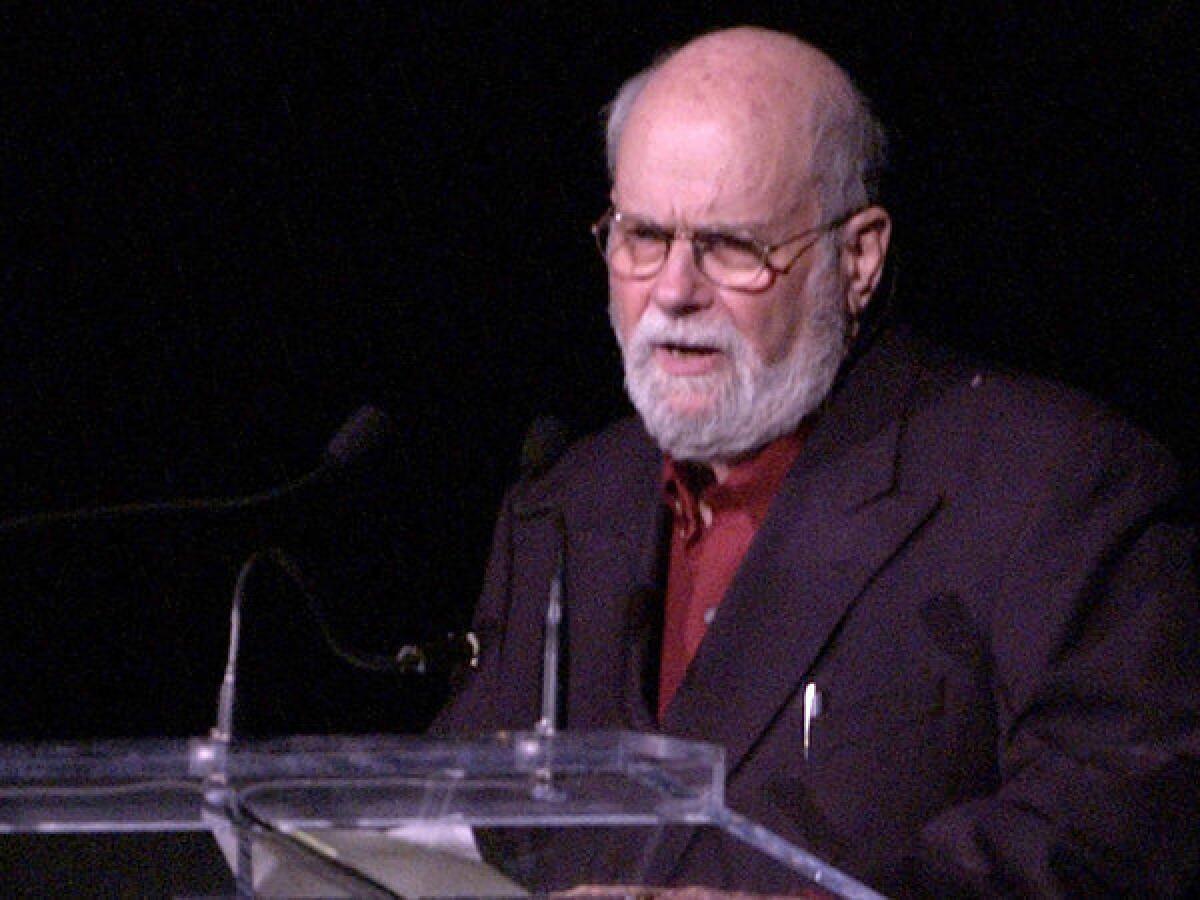Arthur C. Danto dies at 89; art critic lauded Warhol

Arthur C. Danto, a provocative and influential philosopher and critic who championed Andy Warhol and other avant-garde artists and upended the study of art history by declaring that the history of art was over, has died. He was 89.
Danto, an art critic for the Nation magazine from 1984 to 2009 and a professor emeritus at Columbia University, died of heart failure Friday at his Manhattan apartment, his daughter Ginger Danto said.
An academically trained philosopher, Danto became as central to debates about art in the 1960s and after as critic Clement Greenberg had been during the previous generation. Danto was initially troubled, then inspired by the rise of pop art and how artists such as Warhol and Roy Lichtenstein could transform a comic strip or a soup can into something displayed in a museum, a work of “art.” Starting in the ‘60s, he wrote hundreds of essays that often returned to the most philosophical question: What exactly is art? Danto liked to begin with a signature event in his lifetime — a 1964 show at New York’s Stable Gallery that featured Warhol’s now-iconic reproductions of Brillo boxes.
“Is this man some kind of Midas, turning whatever he touches into the gold of pure art? And the whole world consisting of latent art works waiting, like the bread and wine of reality, to be transfigured, through some dark mystery, into the indiscernible flesh and blood of the sacrament?” Danto wrote in “The Artworld,” a landmark essay published in 1964.
“Never mind that the Brillo box may not be good, much less great art. The impressive thing is that it is art at all. But if it is, why not indiscernible Brillo boxes that are in the stockroom? Or has the whole distinction between art and reality broken down?”
Arthur Coleman Danto was born in 1924 in Ann Arbor, Mich., and raised in Detroit. He served two years in the Army during World War II and was stationed in Italy and in North Africa. He then studied art and history at Wayne State University and received master’s and doctoral degrees from Columbia University, where he taught from 1952 to 1992 and chaired the philosophy department for several years. He was especially influenced by the 19th century German philosopher Georg Wilhelm Friedrich Hegel and drew extensively upon Hegel in his theory of art history.
After the Warhol show, Danto pursued a definition of art that could be applied to both the Sistine Chapel and a Brillo box. He rejected the ancient Greek idea that art was imitation and the Renaissance ideal that art was defined by aesthetic pleasure. Danto was shaped by the 20th century rise of “ready-mades,” ordinary objects turned into “art,” whether Warhol’s Brillo boxes or the urinal Marcel Duchamp submitted to galleries during World War I. In “What Art Is,” a book published in 2013, Danto concluded that art was “the embodiment of an idea,” defined not by how it looked but by what it had to say.
“Much of contemporary art is hardly aesthetic at all, but it has in its stead the power of meaning and possibility of truth,” he wrote in “What Art Is.”
Danto’s stature as a critic overshadowed his early career as an artist. He was an accomplished printmaker whose woodcuts were exhibited in the Art Institute of Chicago, the National Gallery of Art and elsewhere in the 1950s.
Danto was married twice — to Shirley Rovetch, who died in 1978, and since 1980 to Barbara Westman. He had two children, Ginger and Elizabeth.
More to Read
Start your day right
Sign up for Essential California for the L.A. Times biggest news, features and recommendations in your inbox six days a week.
You may occasionally receive promotional content from the Los Angeles Times.






